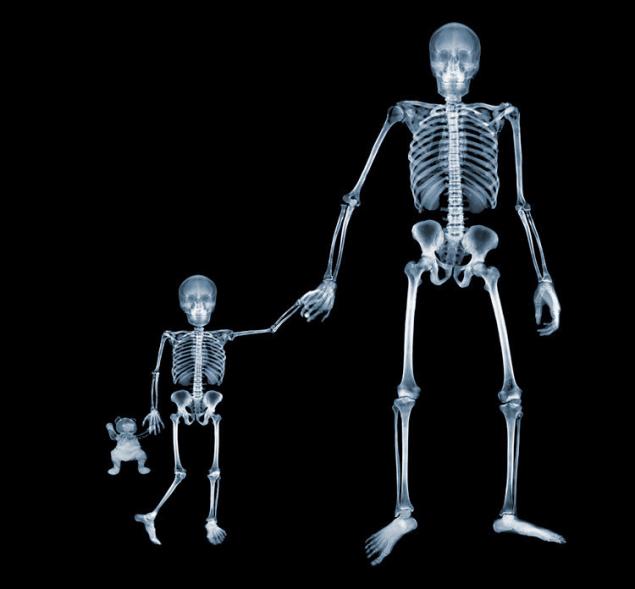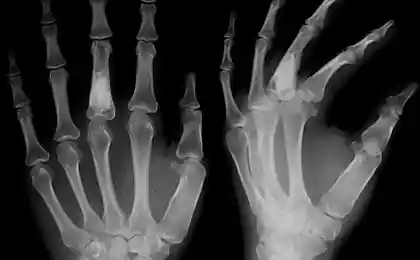665
An x-ray or Mantoux children: still a dangerous choice

An x-ray or Mantoux children: still a dangerous choice. In connection with the entry into force of the new sanitary and epidemiological rules SP 3.1.2.3114-13 "Prevention of tuberculosis" of unvaccinated children was begun more actively to send to the TB.
TB usually suggest parents to make the child either Mantoux (Dioscin) or x-ray.
However, not all parents know that in Russia the x-ray the children in most cases are prohibited, and the Mantoux test and Dioscin-test there are hazardous substances.
Unfortunately, it seems that TB also didn't know that x-rays cannot be used for the diagnosis of tuberculosis without clinical manifestations.
What is the difference between x-ray and fluoroscopy
Fluoroscopy and x – ray are different methods of radiographic studies.
And that's what their main differences:
— Radiation exposure and health hazard if fluoroscopy is higher than in radiography.
— Fluoroscopy is often used for mass diagnosis of diseases, and x-rays to specify a specific diagnosis or monitoring of pathological process dynamics.
— Chest x-ray is cheaper than an x-ray.
What is x-ray, and why for children it is dangerous
X-rays is a medical diagnostic procedure, the radius of examining people.
According to the guidelines of "Hygienic requirements to limit radiation doses to children during x-ray examinations" from 27.04.2007 n 0100/4443-07-34,
medical radiation exposure in contrast to other sources of human exposure has a number of features that must be considered during examination of the patient, especially a child.
The main features of such threat survey are:
— medical radiation exposure has a high power of radiation dose one million times greater than the dose from natural sources of radiation;
in contrast to the natural components in medical exposure is no adaptation to acute irradiation, which is such a diagnosis;
— if medical radiation is directed to sick or weakened body, it strengthens the adverse impact of ionizing radiation;
— medical radiation exposure is very uneven, many times acting generally on the same organs, including the most radiosensitive.
It should be borne in mind that a dangerous action medical exposure, like every other, starts from zero, but it is probabilistic in nature.
This means that any, including arbitrarily "small" dose, can cause adverse consequences in malignant diseases and genetic disorders that can manifest after a certain time.
So all this makes possible to protect patients and especially children.
Further, these guidelines (section 3.1.) reported characteristics of children:
... b) children exhibit increased radiosensitivity to ionizing radiation (on average 2 — 3 times), which creates high risk, both somatic and genetic effects of radiation;
g) physical and physiological differences between adults and children, including the closeness of the bodies, as well as irregular dynamics of their development, lead to higher levels of radiation children than adults...
Since the effects of radiation on the organism of the child more dangerous than the body of the adult, in the examination of children should use all methods of limiting and reducing radiation exposure (p.3.2. )
The most effective ways are:
!!! a) the exclusion of unreasonable research or those studies in which there is no need...
And paragraph 6.4. clearly indicates:
... Intolerable that a clinical examination of the child mandatory accompanied by x-ray examination.
Radiologist reserves the right to refuse x-ray examination, if there is no diagnosis
In accordance with clause 7.5. SanPiN 2.6.1.1192-03 "Hygienic requirements to the device and exploitation of x-ray offices, devices and carrying out x-ray examinations" (approved. Chief state sanitary doctor of the Russian Federation of 14 February 2003)
If unjustified directions on x-ray examination (without a diagnosis, etc) the radiologist may deny a patient in a radiological examination.
P. 7.21. Section VII of those Regulations confirms the ban of such a survey for kids:
Not subject to preventive radiological studies children up to 14 years of age and pregnant women.
Who experts against x-ray how to be tested for TB
According to who recommendations and attachment No. 3 to the guidelines of "Hygienic requirements to limit the radiation dose to children during x-ray studies" (app. Rospotrebnadzor 27.04.2007 No. 07-34 0100/4443),
Routine x-ray studies of the chest could not be designated in solving any issues in Pediatrics. Routine radiographs of the thorax should not be performed simply because the baby is unhealthy. Before making the patient images, it is necessary to verify the presence of obvious clinical manifestations
!!! Who experts consider groundless the conducting of routine radiography at admission the patient to the hospital without proper indications for chest exams, the same applies to the preoperative preparation if the patient has no clinical manifestations of disease of the chest.
— Agree that a common requirement in Russian hospitals?
A very categorical position they occupy in relation to preventive fluorography as mass screening for tuberculosis:
The basis for carrying out radiography, including repeat, are:
recurrent attacks of bronchial asthma;
children with any kind of immune deficiency;
checking the efficiency of treatment of cystic fibrosis.
Based on the above, each parent can convincingly give up false x-rays of the child.
Psychologist, human rights activist Arina intercession
source: apokrov.ru
Source: /users/1077























